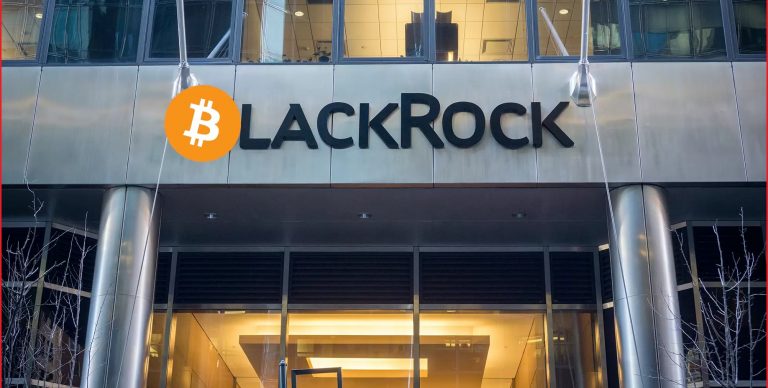
The iShares Bitcoin Trust ETF (IBIT) has indeed made significant strides, entering the top 25 ETFs by assets under management (AUM). As of January 2025, IBIT has amassed over $52.9 billion in AUM, making it the largest spot Bitcoin ETF in the U.S. and a standout among all ETFs. This milestone was achieved in just 227 trading days, breaking records previously set by traditional ETFs like the iShares Core MSCI Emerging Markets ETF (IEMG).
IBIT’s rapid growth is attributed to its high liquidity, strong institutional support from BlackRock, and significant inflows, with nearly $38 billion in net inflows since its launch on January 11, 2024. It has outperformed competitors like the Grayscale Bitcoin Trust (GBTC), which saw outflows of over $21 billion, and even surpassed gold ETFs in AUM within its first year.
Other spot Bitcoin ETFs, such as Fidelity’s Wise Origin Bitcoin Fund (FBTC) with nearly $20 billion in AUM, ARK 21Shares Bitcoin ETF (ARKB), and Bitwise Bitcoin ETF (BITB), also rank among the top 20 ETF launches by AUM, highlighting the growing mainstream adoption of Bitcoin through regulated investment vehicles. The iShares Bitcoin Trust ETF (IBIT) entering the top 25 ETFs by AUM, with over $52.9 billion as of January 2025, carries significant implications for the financial landscape and highlights a growing divide in investor sentiment and market dynamics.
Register for Tekedia Mini-MBA edition 19 (Feb 9 – May 2, 2026): big discounts for early bird.
Tekedia AI in Business Masterclass opens registrations.
Join Tekedia Capital Syndicate and co-invest in great global startups.
Register for Tekedia AI Lab: From Technical Design to Deployment (next edition begins Jan 24 2026).
IBIT’s rapid rise signals increasing institutional and retail acceptance of Bitcoin as a legitimate asset class. Its backing by BlackRock, a titan in asset management, lends credibility, encouraging traditional investors to allocate capital to crypto through regulated vehicles like ETFs. The ETF’s success, alongside other Bitcoin ETFs like FBTC ($20 billion AUM), reflects a shift in portfolio diversification strategies, with Bitcoin now competing with traditional assets like gold (IBIT surpassed gold ETFs in AUM within a year).
IBIT’s high liquidity (average daily trading volume of $1.2 billion in its first year) makes Bitcoin more accessible to investors who prefer ETFs over direct crypto ownership, reducing barriers like managing private keys or navigating crypto exchanges. This liquidity also attracts institutional investors, such as hedge funds and pension funds, potentially stabilizing Bitcoin’s price volatility over time.
The success of spot Bitcoin ETFs, particularly IBIT, underscores the SEC’s approval of these products in January 2024 as a pivotal moment. It has spurred competition, with 12 spot Bitcoin ETFs now managing a combined $74.6 billion in AUM by January 2025. It may pressure regulators to approve similar products, like spot Ethereum ETFs, or expand crypto-related financial instruments, further integrating digital assets into traditional markets.
IBIT’s inflows ($38 billion since launch) indicate significant capital flowing into Bitcoin, potentially driving price appreciation. Bitcoin’s market cap grew to $1.92 trillion by early 2025, reflecting a 128% annualized return since IBIT’s inception. This growth benefits early adopters and institutional investors but could widen wealth gaps if retail investors are slow to participate or lack access.
IBIT’s success is driven largely by institutional inflows, with BlackRock’s marketing and infrastructure catering to large players. This gives institutions an edge in capturing Bitcoin’s upside, potentially marginalizing retail investors who may face higher fees or lack access to sophisticated investment vehicles. Retail investors, while benefiting from ETF accessibility, may still be hesitant due to Bitcoin’s volatility (e.g., a 20% drop in August 2024) or lack of financial education about crypto. This creates a knowledge and access divide.
Some in the crypto community view ETFs like IBIT as contrary to Bitcoin’s decentralized ethos, arguing they centralize ownership through custodians like Coinbase (which holds IBIT’s Bitcoin). They fear this could lead to market manipulation or dilute Bitcoin’s original purpose as a peer-to-peer currency. Wall Street’s embrace of Bitcoin via ETFs represents a co-opting of crypto into the existing financial system, prioritizing profit over ideological purity. This divide fuels debates about whether ETFs undermine Bitcoin’s core principles.
The rapid AUM growth of IBIT and other ETFs benefits wealthy investors and institutions with early exposure, while retail investors or those in developing regions may miss out due to limited access to U.S.-based ETFs or high minimum investments. This exacerbates global wealth disparities. IBIT’s dominance contrasts with outflows from competitors like Grayscale’s GBTC ($21 billion in outflows), highlighting a divide in investor preference. IBIT’s low fees (0.25%) and BlackRock’s reputation give it an edge over higher-fee funds like GBTC (1.5%), creating a winner-takes-most dynamic in the Bitcoin ETF space.
IBIT’s entry into the top 25 ETFs by AUM marks a turning point for Bitcoin’s integration into mainstream finance, boosting liquidity, institutional adoption, and market growth. However, it also deepens divides between institutional and retail investors, crypto purists and traditional finance, and winners and losers in the ETF market. These tensions reflect broader questions about Bitcoin’s role—whether as a revolutionary asset or a co-opted financial product—and who stands to benefit most from its rise.



